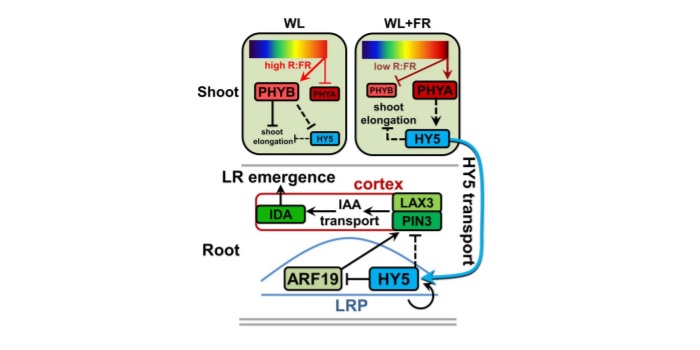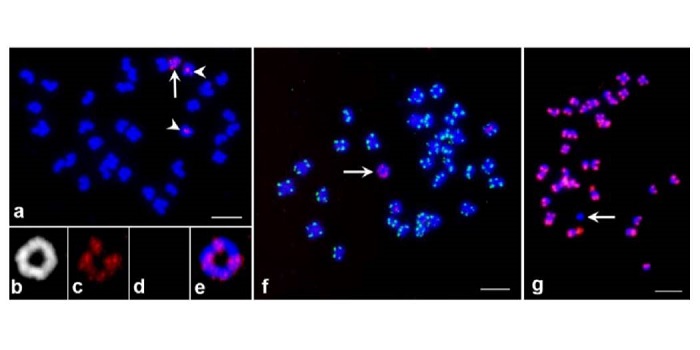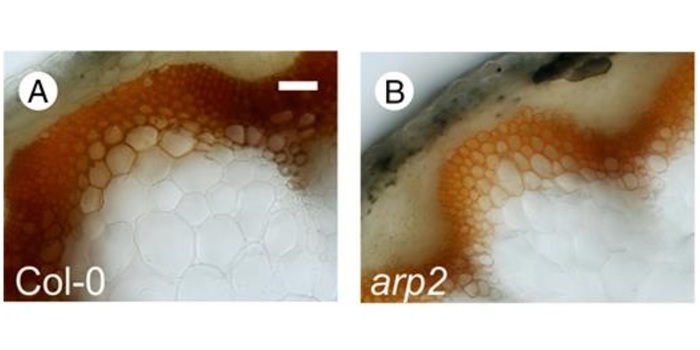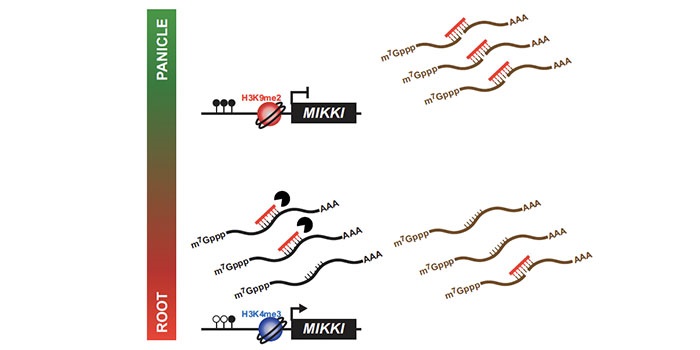
Regulation of lateral root development via the HY5 Transcription Factor
Blog, Plant Science Research Weekly, Research, Research BlogPlant Cell. Plants sense competitors through phytochromes. Phytochromes detect the reflection of far-red light from nearby plants, resulting in a reduced red:far-red (R:FR) ratio. The reduced ratio causes shade avoidance responses which modify shoot and root system architecture. This paper by van Gelderen…

Chloroplasts Use Bacterial Mechanism to Recognize Start Codons
Research, The Plant Cell, The Plant Cell: In a NutshellScharff et al. investigate function of anti-Shine-Dalgarno sequence in chloroplast ribosomes https://doi.org/10.1105/tpc.17.00524
By Lars B. Scharff
BACKGROUND: Cells of plants contain three different systems for protein synthesis: in the cytosol, in plastids, and in mitochondria. Proteins in the…

Gene duplication and aneuploidy trigger rapid evolution of herbicide resistance in common waterhemp
Blog, Plant Science Research Weekly, Research, Research BlogPlant Physiol. Herbicide resistance is a serious problem in contemporary agriculture. One of the most widely used herbicides, glyphosate, interferes with the activity of EPSPS (5-enolpyruvylshikimate-3-phosphate synthase). Koo et al. previously showed that glyphosate-resistant waterhemp (Amaranthus tuberculatus,…

What We're Reading: January 5th
Blog, Research, Research Blog, WWR Full PostGuest Editor: Alecia Biel
Alecia is a graduate student at The Ohio State University in the US and has been a Plantae Fellow since September 2017. Her research focuses on elucidating hormone signaling pathways and the role of the nucleus during this process, particularly throughout plant abiotic…

An oomycete plant pathogen reprograms host pre-mRNA splicing to subvert immunity
Blog, Plant Science Research Weekly, Research, Research BlogPhytopthora sojae poses a serious threat to soybean production world-wide. This oomycete pathogen has a wide arsenal of effector proteins, some of which have been functionally characterized for their virulence role. Huang et al. characterized and demonstrated the functional role of an avirulence effector…

Transcriptional Switching Makes New Messages
Research, The Plant Cell, The Plant Cell: In a NutshellFukudome et al. explore the significance of Pol II C-terminal phosphorylation https://doi.org/10.1105/tpc.17.00331
By Akihito Fukudome and Hisashi Koiwa
Background: In animals and plants, gene expression begins with an enzyme called RNA polymerase II (Pol II), which produces ribonucleic acid (RNA)…

Mediator complex subunits in the regulation of phenylpropanoid biosynthesis ($)
Blog, Plant Science Research Weekly, Research, Research BlogThe Mediator complex is a transcriptional co-regulator that is conserved across kingdoms. Several subunits have been identified through genetic approaches in Arabidopsis. Recessive loss-of-function mutants of MED5 subunits cause phenylpropanoid overaccumulation, but ef4-3, a semi-dominant mutation of…

Tomato Genome Goes Nano
Research, The Plant Cell, The Plant Cell: In a NutshellSchmidt et al. demonstrate that nanopore technology can be applied to plant genomes https://doi.org/10.1105/tpc.17.00521
By Schmidt, M. H.-W., Vogel, A., Denton, A. K., Bolger, A. M., Bolger, M. E., and Usadel, B.
Background: An organism’s genome contains all the necessary information for its…

Regulation of rice root development by a retrotransposon acting as a microRNA sponge
Blog, Plant Science Research Weekly, Research, Research BlogTransposable elements are known to affect their neighboring genes, but they were so far unknown to affect the function of distant genes. Cho and Paszkowski observed a high level of transposon transcription expressed in rice. A transposon with root specific expression, MIKKI, was found to contain an imperfect…

